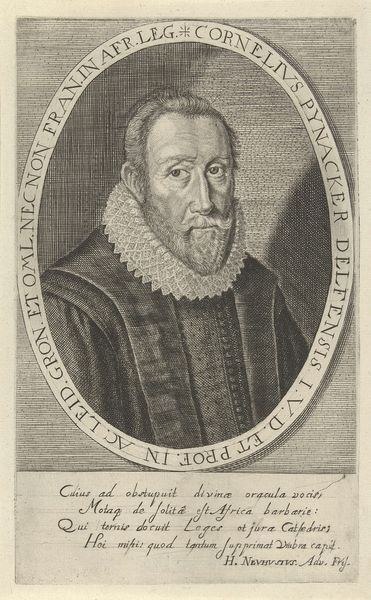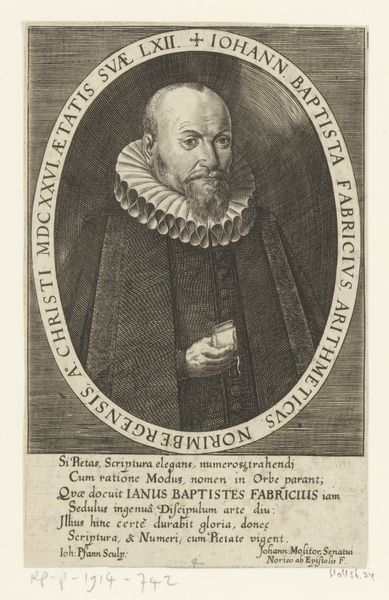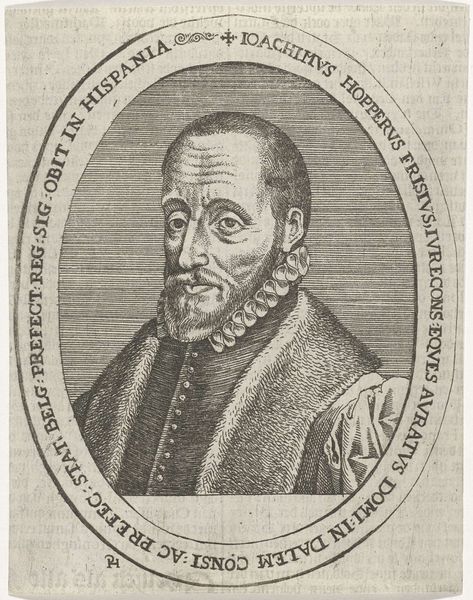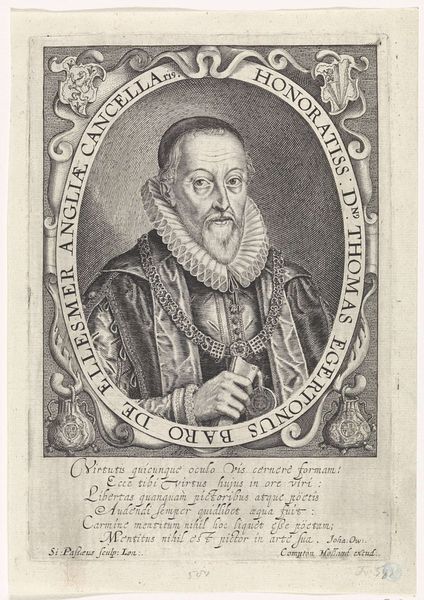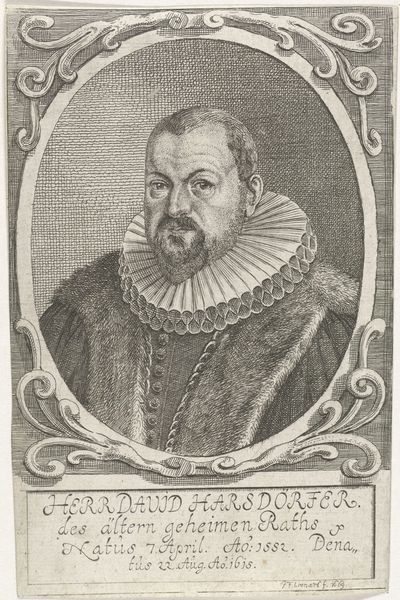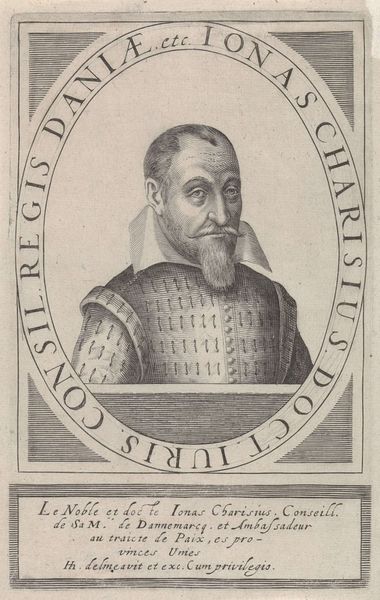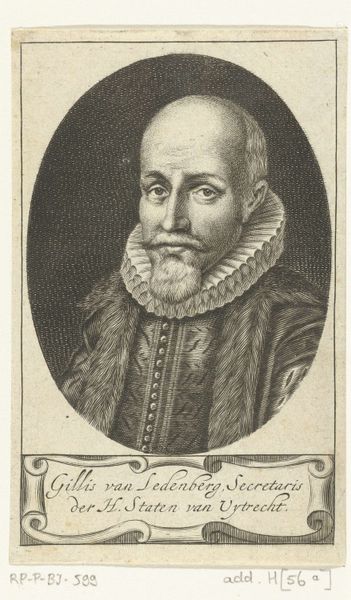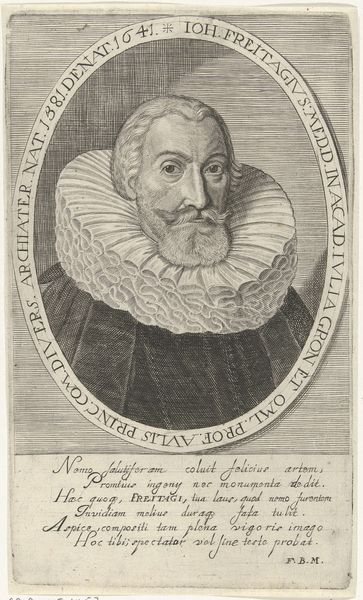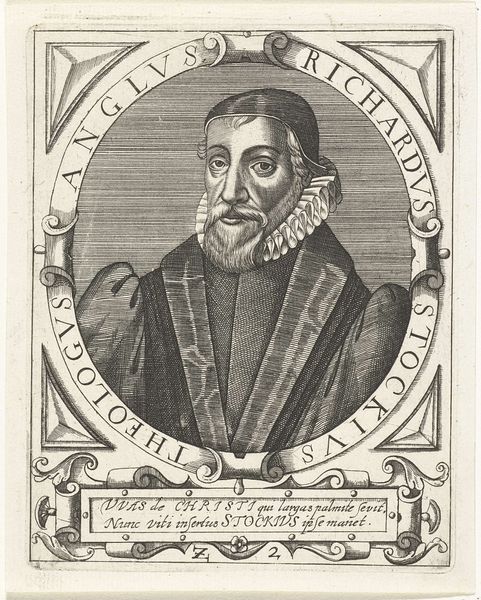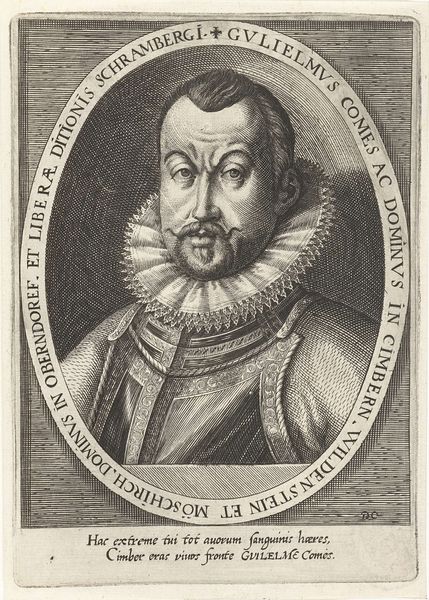
print, engraving
#
portrait
#
baroque
# print
#
engraving
Dimensions: height 152 mm, width 87 mm
Copyright: Rijks Museum: Open Domain
Curator: Before us, we have an engraving, "Portret van Johannes Buxtorf de oude" created sometime between 1673 and 1740. It's quite striking. What's your immediate reaction? Editor: It's undeniably serious. That stiff collar, the precise lines of the engraving – it gives a real sense of the subject's status. The use of monochrome lends a sort of timeless, intellectual air, wouldn't you say? Curator: Precisely. Think about the process: the artist, Johann Georg Seiller, carefully etched the image into a metal plate, each line deliberate and bearing the trace of labor. Engravings like these were often reproduced for broad distribution. Who do you imagine consumed this particular piece and why? Editor: Knowing it's a portrait of Johannes Buxtorf the Elder, a renowned professor of Hebrew, it likely circulated among academic circles. Images like this reinforced his authority and extended his presence beyond the university. It speaks to the social function of art – propagating reputations and solidifying historical narratives. Curator: Exactly, portraits like this become powerful tools of institutional memory. We're dealing with both the physical properties of the engraving itself, the lines incised into the metal, and how these reproducible objects circulated, solidifying social positions and power dynamics. Editor: It's more than just craft though; the ornate lettering and Latin inscription elevate the image. See how the visual elements serve to create and perpetuate the esteem associated with scholarly pursuits. The choice of rendering Buxtorf within an oval symbolizes importance, reinforcing classical motifs to present learning with dignified timelessness. Curator: True. Ultimately, "Portret van Johannes Buxtorf de oude," offers a fascinating look into how art objects are created, distributed, and ultimately, deployed to shape cultural memory. Editor: Absolutely. By looking at how art engages the past and influences perception we can gain some important perspectives on its lasting impact within our current environment as well.
Comments
No comments
Be the first to comment and join the conversation on the ultimate creative platform.

